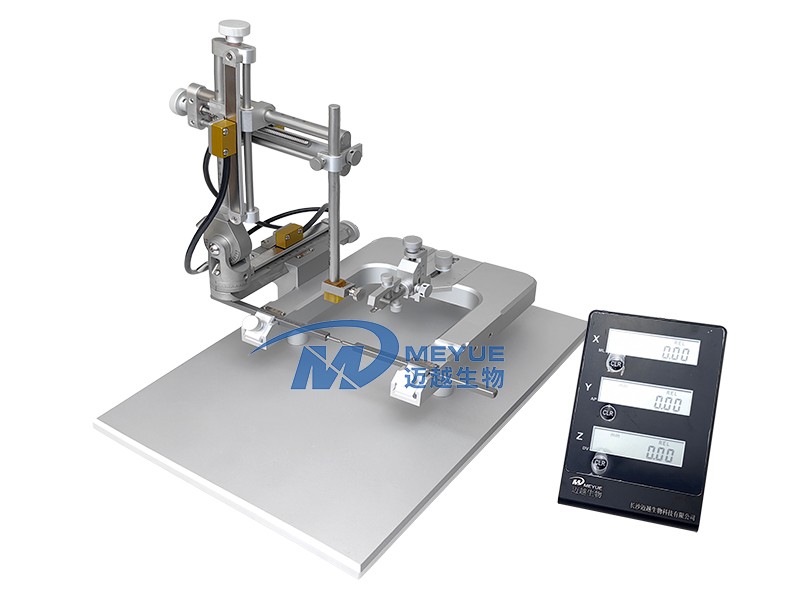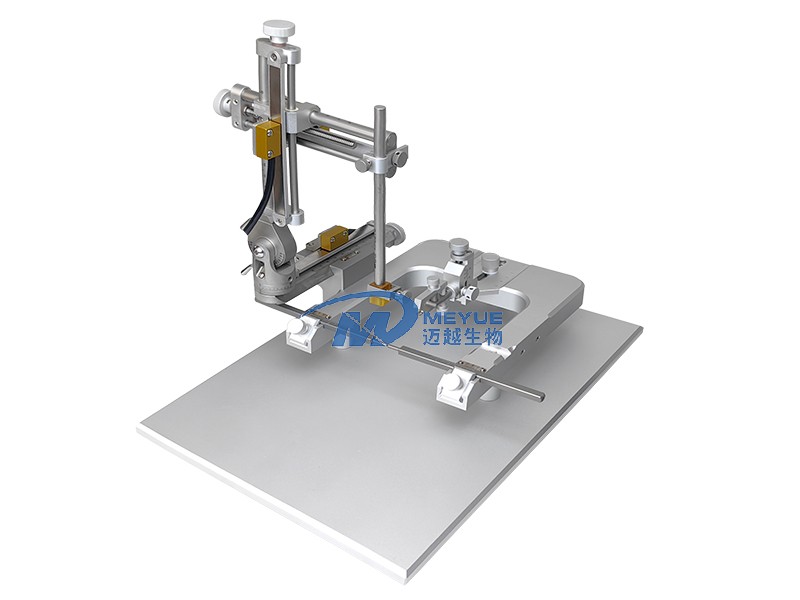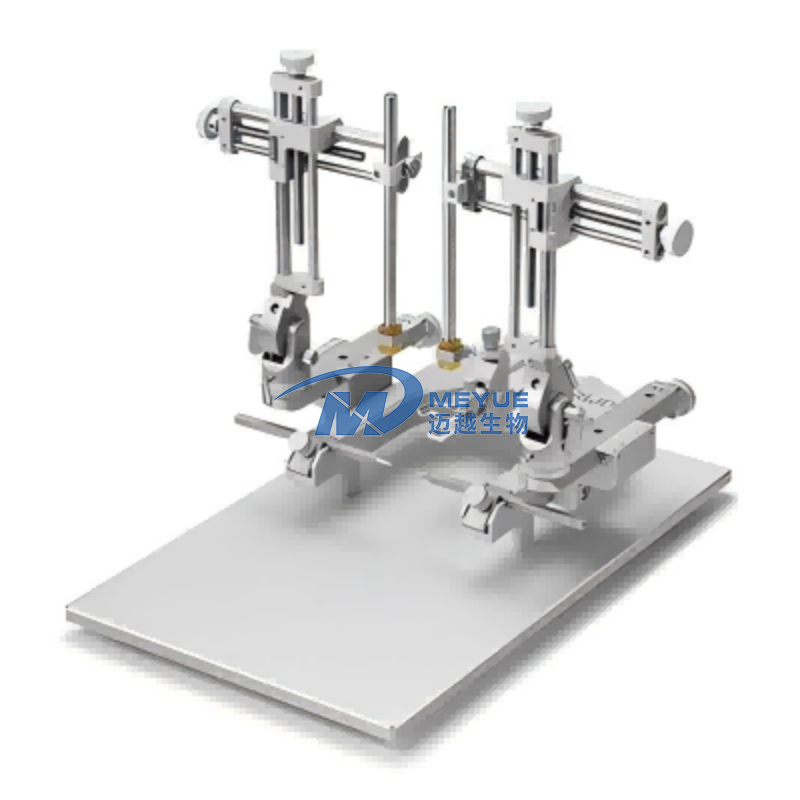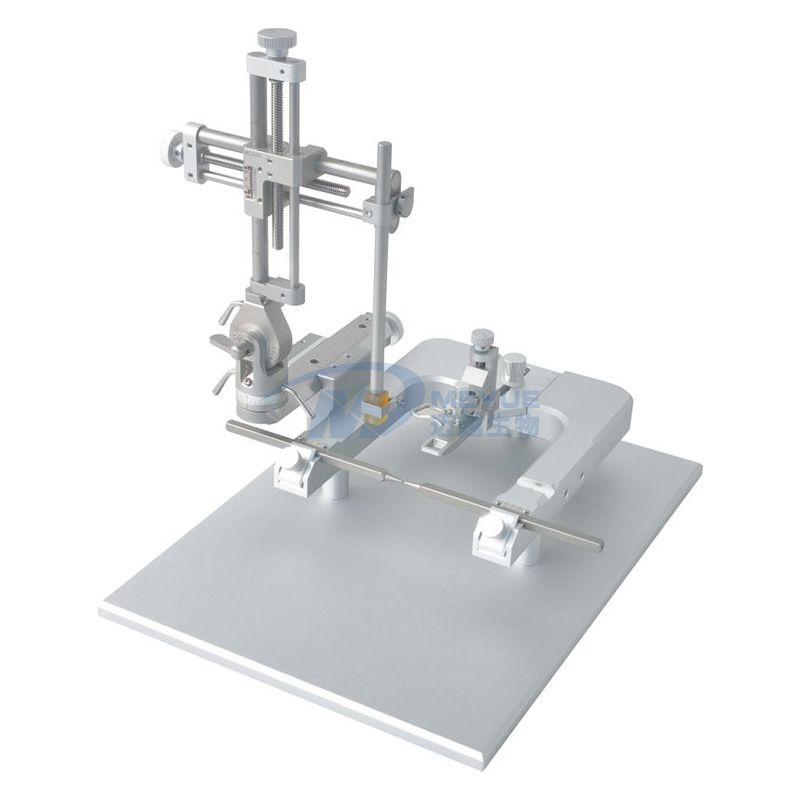Brain stereotaxic device is a device used to locate and fix the brain of experimental animals. During the experiment, a brain locator is first used to fix the animal's head so that it does not undergo any relative movement. Then, using the three-dimensional coordinate system specified by the markers or other reference points outside the animal's skull, and based on the experimental animal's brain localization map, the position of certain neural nuclei under the cerebral cortex, such as the hippocampus, is determined in order to perform targeted stimulation, destruction, injection of drugs, guidance and positioning of the studied neural nuclei under non direct visual exposure. It can be used for establishing animal models of Parkinson's disease, epilepsy, brain tumors, learning and memory, neural stem cell transplantation, cerebral ischemia, and other research.
The Meyue BIO M5016 digital display mouse stereotaxic instrument adopts a universal U-shaped base open structure, which facilitates multi angle operation; Suitable for various animal experiments (rats, mice, lizards, birds, cats, guinea pigs, etc.); The operating arm, which can rotate 180 degrees vertically and 360 degrees horizontally, provides researchers with flexible and accurate positioning; At the same time, it is also equipped with various specifications of probes and electrode fixing clamps, and can provide customized fixing clamps according to different experimental requirements of users to meet various experimental requirements.
Technical Parameter
1. Suitable for brain localization in mice and rats
2.
Displacement sensors and LCD digital display screens have been added to
the 3D operating arm of the original standard brain stereotaxic device
3.
The range of movement for X, Y, and Z coordinates is 0-80mm, with a
reading accuracy of 10um; Directly reading data on the LCD screen can
reduce the risk of human reading errors and improve accuracy
4. The
movement distances of the X, Y, and Z axes can be displayed in real-time
on the LCD screen, and users do not need to view the data in front or
behind. They can directly read the movement distances of the X, Y, and Z
axes
5. The X, Y, and Z axes can be zeroed at any position on the
display screen, and can be directly located at the Bregma point
according to the map, avoiding secondary readings and calculations and
simplifying the experimental operation process
6. The use of LCD
screen display enables surgery to be performed under low light
conditions, suitable for dim environments with limited reading cursor
scale
7. It can accurately locate in three-dimensional space and adjust the rotation angle
8. It can rotate 180 degrees vertically and lock any position at any time
9.
Vertical locking and positioning button separation ensure precise
operation at any angle, with precisely designed lateral rotation
operating space
10. The scale component processed with special
technology eliminates the fatigue caused by reading. The animal adapter
head adopts a curved design spring structure for compression, which does
not harm the structural organization of the animal head and achieves
the purpose of fixation
11. The ear rod adopts a pressure plate
method and is equipped with springs; Push symmetrically towards the
center, with consistent readings on both sides
12. Can be matched
with micro injection pumps, microscopic camera devices, cranial drills,
electrodes, etc. for precise positioning
13. Different animal adapters such as rats, mice, cats, rabbits, geckos, and guinea pigs can be optionally selected
14. Simple and exquisite appearance, convenient and flexible installation and adjustment methods
15.
Imported sensors and display screens are selected, with stable and
reliable quality, and will not cause display abnormalities due to humid
or water ingress environments
16. The digital display screen adopts a
removable battery box, which allows for easy battery replacement
without the need for tools. Using battery power avoids electronic noise
and electromagnetic interference, making it suitable for
electrophysiological experiments
17. To prevent misoperation, add a one key locking mechanism in the Y direction (to prevent misoperation during the experiment)
18. One click zeroing design for the rotating seat (ensuring the verticality of the cross arm)
Ordering Information
Optional Adapter
Optional Clamp Holder
Optional Ear Rods
 簡體中文
簡體中文 English
English




